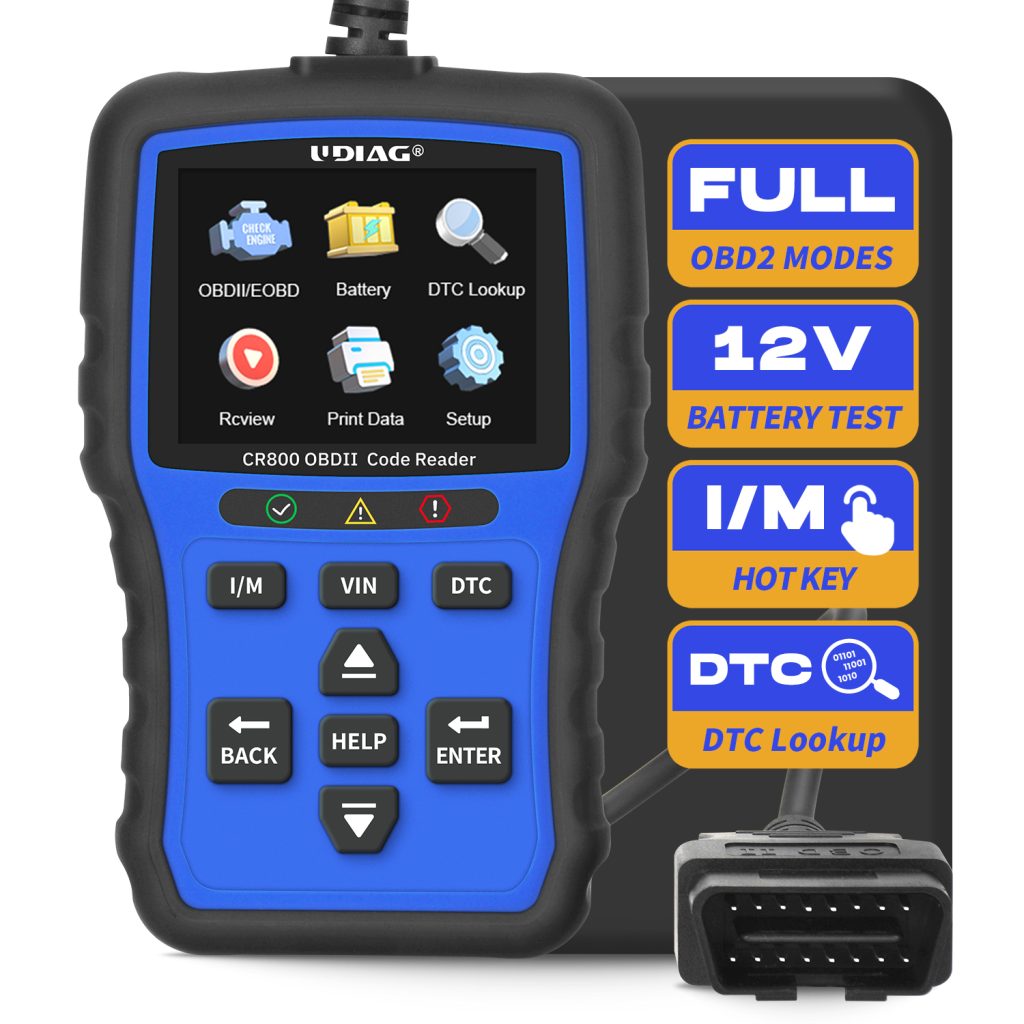How do I choose the right OBD-II scanner for my car
2025-02-05 by UDIAG
I. Introduction
In the world of automotive maintenance and repair, an OBD-II scanner is an invaluable tool for both professionals and car enthusiasts alike. These devices connect to a vehicle’s onboard diagnostics system, allowing users to read trouble codes, monitor performance data, and perform various diagnostic tests. With a wide variety of OBD-II scanners available on the market, choosing the right one can be daunting. This essay aims to guide you through the process of selecting the ideal OBD-II scanner for your needs by exploring key factors to consider and providing tailored recommendations.
II. Understanding OBD-II Scanners
Definition
An OBD-II scanner is a diagnostic tool that interfaces with a vehicle’s onboard computer system to retrieve information about its performance and health. It can read diagnostic trouble codes (DTCs), which indicate issues within various systems of the vehicle, and provide real-time data on engine performance.
Types of OBD-II Scanners
There are several types of OBD-II scanners, each catering to different user needs:
- Code Readers: These are basic devices that primarily read and clear trouble codes. They are user-friendly and ideal for those who want a straightforward solution for checking engine lights.
- Scan Tools: More advanced than code readers, scan tools offer features such as live data monitoring and graphing capabilities. They are suitable for DIY mechanics who want deeper insights into their vehicle’s performance.
- Diagnostic Scanners: These comprehensive tools provide extensive functionalities, including bi-directional controls (allowing users to test components) and programming capabilities for advanced diagnostics. They are best suited for professional mechanics or serious automotive enthusiasts.
III. Key Factors to Consider
Compatibility
One of the first considerations when choosing an OBD-II scanner is compatibility with your vehicle. Most vehicles manufactured after 1996 are equipped with OBD-II systems, but the protocols can vary (e.g., ISO 9141-2, CAN). It’s essential to ensure that the scanner you select supports your vehicle’s specific protocol. You can check compatibility through your owner’s manual, by contacting the manufacturer, or by using online databases.
Features
The features offered by an OBD-II scanner can significantly influence your decision:
- Basic Features vs. Advanced Functionalities: While basic scanners can read and clear codes, more advanced models allow for live data monitoring, system-specific tests (such as brake or transmission diagnostics), and maintenance resets (like oil light resets).
User Interface
An intuitive user interface is crucial for ease of use. Look for scanners with clear displays, easy navigation menus, and sufficient screen size to read data comfortably. A well-designed interface can make diagnostics much more efficient.
Price Range
OBD-II scanners come in various price ranges, from budget-friendly options under $50 to professional-grade scanners costing several hundred dollars. It’s essential to balance your budget with the features you need. Generally, higher-priced models offer more functionalities but consider what you will realistically use.
IV. Evaluating Scanner Performance
Speed of Code Reading
The speed at which a scanner reads codes can be an important performance metric. A scanner that quickly retrieves codes allows for more efficient diagnostics, especially in busy repair environments.
Accuracy
Accuracy is paramount in diagnostics; a reliable scanner should provide precise readings to avoid misdiagnosis. Look for models with good reviews regarding their accuracy in detecting issues.
Live Data Capability
Having access to live data can be beneficial for diagnosing intermittent problems that may not trigger a trouble code. Real-time data allows you to monitor various parameters like engine temperature, RPMs, and fuel trim while driving.
V. Additional Considerations
Warranty and Support
When investing in an OBD-II scanner, consider the warranty offered by the manufacturer and the availability of customer support. A longer warranty period can provide peace of mind regarding product reliability.
Update Capability
As automotive technology evolves, so do diagnostic protocols. Regular software updates ensure that your scanner remains compatible with newer vehicles and technologies. Look for models that offer easy update options.
VI. Recommendations Based on Use Cases
For DIY Mechanics
For those who enjoy working on their vehicles at home but may not need advanced features, a mid-range scan tool like the BlueDriver or FIXD offers a great balance of functionality and affordability.
For Professionals
Professional mechanics may benefit from high-end models such as the Autel MaxiCOM or Snap-on Solus Edge, which provide extensive diagnostic capabilities and support multiple vehicle makes.
For Casual Users
If you only need basic functionality without overwhelming complexity, consider budget-friendly options like the BAFX Products Bluetooth Scanner or Ancel AD310, which are user-friendly and effective for simple diagnostics.
Conclusion
Choosing the right OBD-II scanner is essential for effective vehicle diagnostics and maintenance. By understanding the different types of scanners available, considering key factors such as compatibility, features, user interface, price range, performance metrics, and additional considerations like warranty and update capability, you can make an informed decision tailored to your specific needs. Whether you’re a DIY mechanic or a professional technician, investing in the right OBD-II scanner will enhance your ability to diagnose issues accurately and efficiently—ultimately leading to better vehicle care and performance.
FAQs
1. What is an OBD-II scanner?
An OBD-II scanner is a diagnostic tool that connects to a vehicle’s onboard diagnostics (OBD) system, allowing users to read and clear trouble codes, monitor real-time data, and perform various diagnostic tests.
2. How do I know if an OBD-II scanner is compatible with my vehicle?
To check compatibility, refer to the scanner’s manual or the manufacturer’s website. Most OBD-II scanners are compatible with vehicles manufactured after 1996 in the U.S., but some functions may vary based on the vehicle’s make and model.
3. What types of issues can an OBD-II scanner diagnose?
OBD-II scanners can diagnose a wide range of issues, including engine performance problems, transmission malfunctions, emissions-related issues, and other body system faults.
4. Where is the OBD-II port located in my car?
The OBD-II port is typically located under the dashboard on the driver’s side, near the steering column. It has a rectangular shape with 16 pin slots.
5. Can I use an OBD-II scanner to clear a check engine light?
Yes, most OBD-II scanners allow you to clear diagnostic trouble codes (DTCs) and reset the check engine light after addressing the underlying issue.
6. What features should I look for in an OBD-II scanner?
Key features to consider include:
- Code reading and clearing: Basic functionality for troubleshooting.
- Live data monitoring: Real-time data for diagnosing intermittent issues.
- I/M readiness check: Tests to see if your vehicle will pass emissions inspections.
- User-friendly interface: Easy navigation and readability.
- Warranty and support: Assurance of product reliability.
7. Are there different types of OBD-II scanners?
Yes, there are mainly three types:
- Code Readers: Simple devices that read and clear codes.
- Scan Tools: More advanced tools that provide live data and additional diagnostic functions.
- Diagnostic Scanners: Comprehensive tools with extensive capabilities, including bi-directional controls and programming.



